David Smith
Adaptive Clipping for Privacy-Preserving Few-Shot Learning: Enhancing Generalization with Limited Data
Mar 27, 2025Abstract:In the era of data-driven machine-learning applications, privacy concerns and the scarcity of labeled data have become paramount challenges. These challenges are particularly pronounced in the domain of few-shot learning, where the ability to learn from limited labeled data is crucial. Privacy-preserving few-shot learning algorithms have emerged as a promising solution to address such pronounced challenges. However, it is well-known that privacy-preserving techniques often lead to a drop in utility due to the fundamental trade-off between data privacy and model performance. To enhance the utility of privacy-preserving few-shot learning methods, we introduce a novel approach called Meta-Clip. This technique is specifically designed for meta-learning algorithms, including Differentially Private (DP) model-agnostic meta-learning, DP-Reptile, and DP-MetaSGD algorithms, with the objective of balancing data privacy preservation with learning capacity maximization. By dynamically adjusting clipping thresholds during the training process, our Adaptive Clipping method provides fine-grained control over the disclosure of sensitive information, mitigating overfitting on small datasets and significantly improving the generalization performance of meta-learning models. Through comprehensive experiments on diverse benchmark datasets, we demonstrate the effectiveness of our approach in minimizing utility degradation, showcasing a superior privacy-utility trade-off compared to existing privacy-preserving techniques. The adoption of Adaptive Clipping represents a substantial step forward in the field of privacy-preserving few-shot learning, empowering the development of secure and accurate models for real-world applications, especially in scenarios where there are limited data availability.
Multi-Objective Optimization for Privacy-Utility Balance in Differentially Private Federated Learning
Mar 27, 2025Abstract:Federated learning (FL) enables collaborative model training across distributed clients without sharing raw data, making it a promising approach for privacy-preserving machine learning. However, ensuring differential privacy (DP) in FL presents challenges due to the trade-off between model utility and privacy protection. Clipping gradients before aggregation is a common strategy to limit privacy loss, but selecting an optimal clipping norm is non-trivial, as excessively high values compromise privacy, while overly restrictive clipping degrades model performance. In this work, we propose an adaptive clipping mechanism that dynamically adjusts the clipping norm using a multi-objective optimization framework. By integrating privacy and utility considerations into the optimization objective, our approach balances privacy preservation with model accuracy. We theoretically analyze the convergence properties of our method and demonstrate its effectiveness through extensive experiments on MNIST, Fashion-MNIST, and CIFAR-10 datasets. Our results show that adaptive clipping consistently outperforms fixed-clipping baselines, achieving improved accuracy under the same privacy constraints. This work highlights the potential of dynamic clipping strategies to enhance privacy-utility trade-offs in differentially private federated learning.
Privacy at a Price: Exploring its Dual Impact on AI Fairness
Apr 15, 2024



Abstract:The worldwide adoption of machine learning (ML) and deep learning models, particularly in critical sectors, such as healthcare and finance, presents substantial challenges in maintaining individual privacy and fairness. These two elements are vital to a trustworthy environment for learning systems. While numerous studies have concentrated on protecting individual privacy through differential privacy (DP) mechanisms, emerging research indicates that differential privacy in machine learning models can unequally impact separate demographic subgroups regarding prediction accuracy. This leads to a fairness concern, and manifests as biased performance. Although the prevailing view is that enhancing privacy intensifies fairness disparities, a smaller, yet significant, subset of research suggests the opposite view. In this article, with extensive evaluation results, we demonstrate that the impact of differential privacy on fairness is not monotonous. Instead, we observe that the accuracy disparity initially grows as more DP noise (enhanced privacy) is added to the ML process, but subsequently diminishes at higher privacy levels with even more noise. Moreover, implementing gradient clipping in the differentially private stochastic gradient descent ML method can mitigate the negative impact of DP noise on fairness. This mitigation is achieved by moderating the disparity growth through a lower clipping threshold.
Seeing the Fruit for the Leaves: Robotically Mapping Apple Fruitlets in a Commercial Orchard
Aug 15, 2023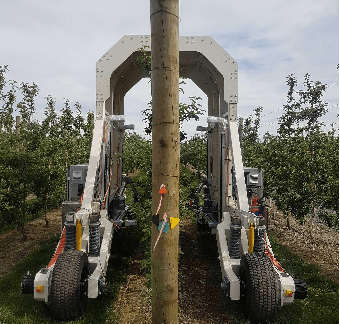

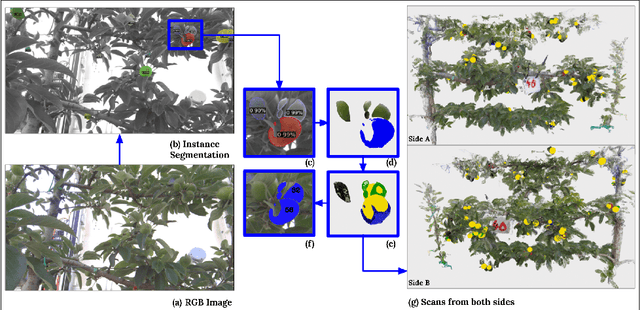
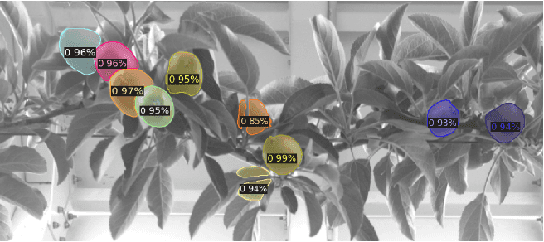
Abstract:Aotearoa New Zealand has a strong and growing apple industry but struggles to access workers to complete skilled, seasonal tasks such as thinning. To ensure effective thinning and make informed decisions on a per-tree basis, it is crucial to accurately measure the crop load of individual apple trees. However, this task poses challenges due to the dense foliage that hides the fruitlets within the tree structure. In this paper, we introduce the vision system of an automated apple fruitlet thinning robot, developed to tackle the labor shortage issue. This paper presents the initial design, implementation,and evaluation specifics of the system. The platform straddles the 3.4 m tall 2D apple canopy structures to create an accurate map of the fruitlets on each tree. We show that this platform can measure the fruitlet load on an apple tree by scanning through both sides of the branch. The requirement of an overarching platform was justified since two-sided scans had a higher counting accuracy of 81.17 % than one-sided scans at 73.7 %. The system was also demonstrated to produce size estimates within 5.9% RMSE of their true size.
Citations as Queries: Source Attribution Using Language Models as Rerankers
Jun 29, 2023


Abstract:This paper explores new methods for locating the sources used to write a text, by fine-tuning a variety of language models to rerank candidate sources. After retrieving candidates sources using a baseline BM25 retrieval model, a variety of reranking methods are tested to see how effective they are at the task of source attribution. We conduct experiments on two datasets, English Wikipedia and medieval Arabic historical writing, and employ a variety of retrieval and generation based reranking models. In particular, we seek to understand how the degree of supervision required affects the performance of various reranking models. We find that semisupervised methods can be nearly as effective as fully supervised methods while avoiding potentially costly span-level annotation of the target and source documents.
Towards Blockchain-Assisted Privacy-Aware Data Sharing For Edge Intelligence: A Smart Healthcare Perspective
Jun 29, 2023Abstract:The popularization of intelligent healthcare devices and big data analytics significantly boosts the development of smart healthcare networks (SHNs). To enhance the precision of diagnosis, different participants in SHNs share health data that contains sensitive information. Therefore, the data exchange process raises privacy concerns, especially when the integration of health data from multiple sources (linkage attack) results in further leakage. Linkage attack is a type of dominant attack in the privacy domain, which can leverage various data sources for private data mining. Furthermore, adversaries launch poisoning attacks to falsify the health data, which leads to misdiagnosing or even physical damage. To protect private health data, we propose a personalized differential privacy model based on the trust levels among users. The trust is evaluated by a defined community density, while the corresponding privacy protection level is mapped to controllable randomized noise constrained by differential privacy. To avoid linkage attacks in personalized differential privacy, we designed a noise correlation decoupling mechanism using a Markov stochastic process. In addition, we build the community model on a blockchain, which can mitigate the risk of poisoning attacks during differentially private data transmission over SHNs. To testify the effectiveness and superiority of the proposed approach, we conduct extensive experiments on benchmark datasets.
Learn to Unlearn: A Survey on Machine Unlearning
May 12, 2023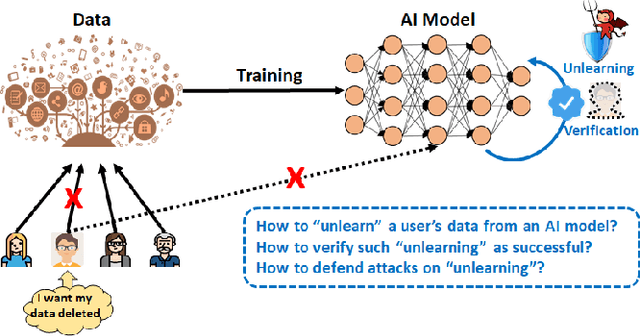
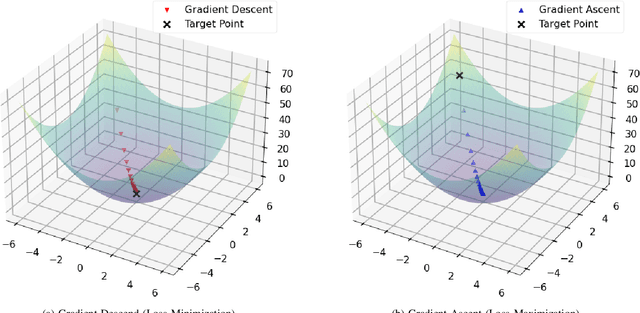
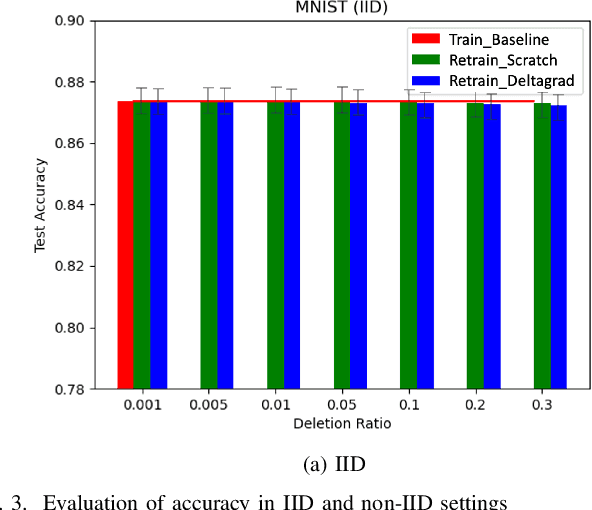
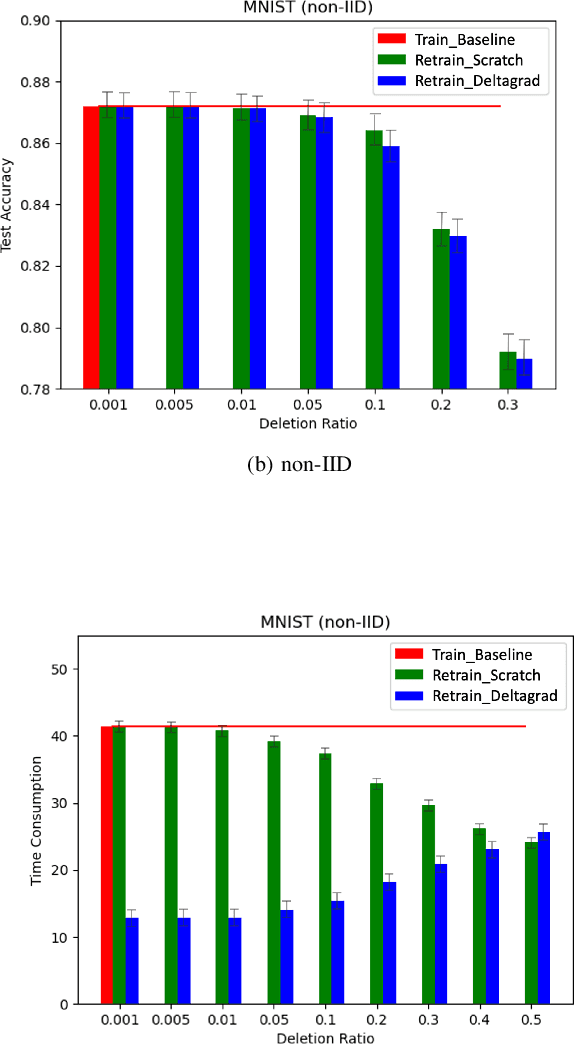
Abstract:Machine Learning (ML) models contain private information, and implementing the right to be forgotten is a challenging privacy issue in many data applications. Machine unlearning has emerged as an alternative to remove sensitive data from a trained model, but completely retraining ML models is often not feasible. This survey provides a concise appraisal of Machine Unlearning techniques, encompassing both exact and approximate methods, probable attacks, and verification approaches. The survey compares the merits and limitations each method and evaluates their performance using the Deltagrad exact machine unlearning method. The survey also highlights challenges like the pressing need for a robust model for non-IID deletion to mitigate fairness issues. Overall, the survey provides a thorough synopsis of machine unlearning techniques and applications, noting future research directions in this evolving field. The survey aims to be a valuable resource for researchers and practitioners seeking to provide privacy and equity in ML systems.
Look how they have grown: Non-destructive Leaf Detection and Size Estimation of Tomato Plants for 3D Growth Monitoring
Apr 07, 2023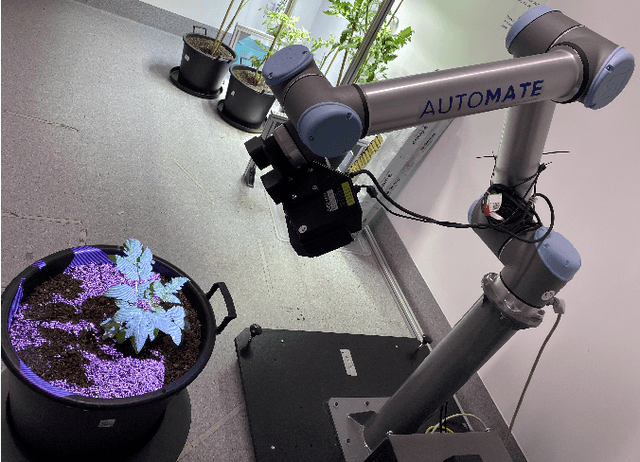
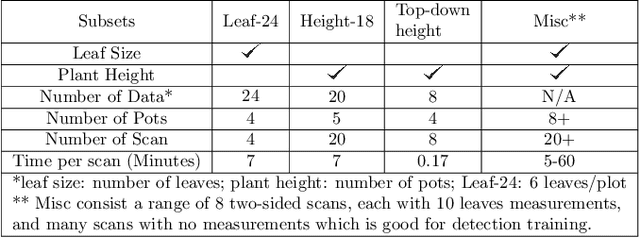
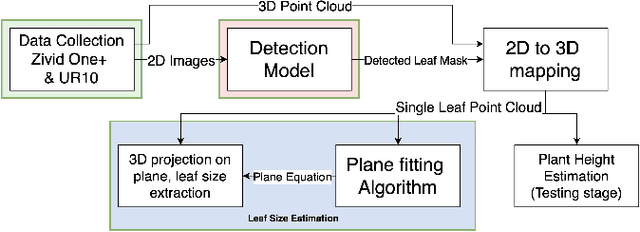

Abstract:Smart farming is a growing field as technology advances. Plant characteristics are crucial indicators for monitoring plant growth. Research has been done to estimate characteristics like leaf area index, leaf disease, and plant height. However, few methods have been applied to non-destructive measurements of leaf size. In this paper, an automated non-destructive imaged-based measuring system is presented, which uses 2D and 3D data obtained using a Zivid 3D camera, creating 3D virtual representations (digital twins) of the tomato plants. Leaves are detected from corresponding 2D RGB images and mapped to their 3D point cloud using the detected leaf masks, which then pass the leaf point cloud to the plane fitting algorithm to extract the leaf size to provide data for growth monitoring. The performance of the measurement platform has been measured through a comprehensive trial on real-world tomato plants with quantified performance metrics compared to ground truth measurements. Three tomato leaf and height datasets (including 50+ 3D point cloud files of tomato plants) were collected and open-sourced in this project. The proposed leaf size estimation method demonstrates an RMSE value of 4.47mm and an R^2 value of 0.87. The overall measurement system (leaf detection and size estimation algorithms combine) delivers an RMSE value of 8.13mm and an R^2 value of 0.899.
* 10 Pages, 10 Figures
Seeing the Fruit for the Leaves: Towards Automated Apple Fruitlet Thinning
Feb 20, 2023



Abstract:Following a global trend, the lack of reliable access to skilled labour is causing critical issues for the effective management of apple orchards. One of the primary challenges is maintaining skilled human operators capable of making precise fruitlet thinning decisions. Thinning requires accurately measuring the true crop load for individual apple trees to provide optimal thinning decisions on an individual basis. A challenging task due to the dense foliage obscuring the fruitlets within the tree structure. This paper presents the initial design, implementation, and evaluation details of the vision system for an automatic apple fruitlet thinning robot to meet this need. The platform consists of a UR5 robotic arm and stereo cameras which enable it to look around the leaves to map the precise number and size of the fruitlets on the apple branches. We show that this platform can measure the fruitlet load on the apple tree to with 84% accuracy in a real-world commercial apple orchard while being 87% precise.
Realistic Differentially-Private Transmission Power Flow Data Release
Mar 25, 2021



Abstract:For the modeling, design and planning of future energy transmission networks, it is vital for stakeholders to access faithful and useful power flow data, while provably maintaining the privacy of business confidentiality of service providers. This critical challenge has recently been somewhat addressed in [1]. This paper significantly extends this existing work. First, we reduce the potential leakage information by proposing a fundamentally different post-processing method, using public information of grid losses rather than power dispatch, which achieve a higher level of privacy protection. Second, we protect more sensitive parameters, i.e., branch shunt susceptance in addition to series impedance (complete pi-model). This protects power flow data for the transmission high-voltage networks, using differentially private transformations that maintain the optimal power flow consistent with, and faithful to, expected model behaviour. Third, we tested our approach at a larger scale than previous work, using the PGLib-OPF test cases [10]. This resulted in the successful obfuscation of up to a 4700-bus system, which can be successfully solved with faithfulness of parameters and good utility to data analysts. Our approach addresses a more feasible and realistic scenario, and provides higher than state-of-the-art privacy guarantees, while maintaining solvability, fidelity and feasibility of the system.
 Add to Chrome
Add to Chrome Add to Firefox
Add to Firefox Add to Edge
Add to Edge